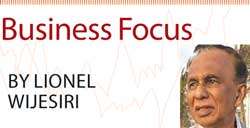08 May 2018 - {{hitsCtrl.values.hits}}

 Leaders often can encounter ‘information overload’ in their work. They know the importance of measuring results but can find themselves faced with an overwhelming hodgepodge of numbers rather than a simpler and more focused set of data that is truly useful for making decisions that lead to achieving their organisational vision.
Leaders often can encounter ‘information overload’ in their work. They know the importance of measuring results but can find themselves faced with an overwhelming hodgepodge of numbers rather than a simpler and more focused set of data that is truly useful for making decisions that lead to achieving their organisational vision.
If we use the criteria above, we want our metrics to be important in determining success but simple and focused. So, how do we decide what ‘key success measures’ are most valuable to guide strategic decision-making?
Essential key success measures
There are four essential key success measures and one auxiliary measure that are all of great value.
Financial viability. Example: profitability.
Customer satisfaction. Example: performance on customer satisfaction surveys.
Employee satisfaction. Example: performance on employee satisfaction surveys.
Contribution to society. Example: number of trees saved by developing paperless processes.
Key operational results. Example: percent of hotel rooms occupied. (auxiliary measure)
Why are these measures important?
Financial viability is important for organisational survival and growth. However, many companies make this the sole focus of their measurement efforts, relying primarily on budgets and sales forecasts. This approach typically results in an organisation that is driven by its financial departments and the important ‘people’ outcomes that are essential to produce long-term success receive little recognition.
Customer satisfaction is important because without happy customers the organisation will fail.
Employee satisfaction is important because over the long term it is impossible to have an organisation with unhappy employees that has happy customers.
Contribution to society (e.g., environment, ethics, safety, social responsibility) is important because every organisation needs more than a simple profit motive to attract and retain the best talent and to sustain itself over time.
Key operational results are not considered an essential key success measure on the order of the first four and therefore are viewed as serving an auxiliary function. However, there are usually one to three operational indicators that represent the leverage points in your organisation and they can be a valuable addition to your metrics.
How do you arrive at your key success measures?
First, examine your mission, vision and core values to determine what outcomes your organisation believes are important – then make these items your key success measures.
Second, limit your key success measures to 10 or less so that your measures are focused rather than overwhelming in detail.
Third, set an ultimate goal at the end of your strategic planning horizon, usually three to five years and then create intermediate goals for the intervening years (e.g., if you are a start up with zero profit and your financial goal is to have 15mn in profit in year three, then you might set intermediate goals of 3mn at the end of fiscal year 5mn at year two and then 7mn at year three).
What techniques should be used to reach success?
Create key success measures that track outcomes instrumental to sustained organisational high performance, not just what is easy to measure.
At a minimum, include the four essential key success measures of financial viability, customer satisfaction, employee satisfaction and contribution to society and the fifth important but auxiliary measure of operational results.
To achieve importance, focus and simplicity limit your key success measures to no more than 10.
To create your key success measures, first examine your vision, mission and core values for the outcomes that will lead to sustained organisational high performance.
Metrics
You can use a few metrics to determine your level of success. These metrics are examples only and are suggestions for you. It is necessary you consider yourself what is needed for your organisation.
Sales revenue
Total sales revenue is usually measured through actual rupees received but if you’re on an accrual-based accounting system, it can also include total amount of business booked. Your customer relationship management (CRM) should attach revenue to contacts and companies and should track each individual buyer journey and what drives that revenue.
Total sales revenue may not be indicative of how well you’re doing or where you may be able to improve. You may want to dive deeper and look at such key metrics.
Revenue by channel: If you sell through different channels (distributors), you can see which bring in the most business. Your CRM tracks revenue by grouping or by campaign IDs, so you can measure which channels have the greatest impact on your business.
Revenue by salesperson: Evaluate the performance of each salesperson. Are they meeting quota? Is their average deal getting bigger? Your CRM follows every client, including which salespeople the client worked with, so your sales managers can easily see their top performers and those who need more coaching.
Average revenue per user: Often, average revenue per client indicates the type of client you’re closing. If this number goes up, it may indicate you’re selling to larger clients or you’re selling at a high rate to your target market. Your CRM gives you the ability to dive into details about clients, so you can extract metrics and valuable insights about them.
Revenue by region: If you sell your product in different regions (local or international), you want to see how much is coming in through each area. Because your CRM stores regional information about each contact and company, this filter is easy to run.
Revenue by demographics: Knowing whether certain demographics make up your revenue sources help you focus your marketing resources on the markets that demand your product or service. Look at gender, income, preferences, family status, homeowner status, and more for better insight. CRM platforms store an unlimited number of fields you can use to find which demographic characteristics impact your business.
(You should also maintain a comprehensive and updated customer profile. Your CRM should hold all your customer data, including groups of customers to help you segment them for analysis, automation and marketing.)
Efficiency
Efficiency is about being able to do more with less effort. Using machines to save manual labour or computers to save data entry or manipulation leads your business results in greater efficiency.
There are number of ways that CRM contributes to efficiency. For example:
Alerts: When measuring what leads and clients do across multiple channels (for example, websites, email, text, phone), your CRM can tell your sales team when a hot lead needs an immediate follow-up. Because your salespeople and their contacts are tied into your CRM, alerts are timely and contain the information they need to close more deals.
Auto-responders and drip campaigns: When a lead or client fills out a form or activates some other trigger, you can set things in motion to automate what happens next, such as a series of emails or personalized printed material. Logs of these automated marketing functions are stored in the CRM, along with what your contacts did when they received these messages.
Overdue warnings: When you set up workflows or automated CRM activity schedules, you can set predefined to-dos for your team. If someone drops the ball on a regularly scheduled sequence, management can see it immediately.
Automatic CRM updates: When software automatically updates your CRM, it saves manual data entry. For example, one-to-one emails are saved, phone calls are recorded and transcribed, chat sessions with customer service are added, videos are watched and email newsletters are opened or clicked. CRM automatically transfers this data to your contact records, saving you time.
(Lionel Wijesiri is a retired company director with over 30 years’ experience in senior business management. Presently he is a freelance journalist and could be contacted on [email protected])
18 Nov 2024 48 minute ago
18 Nov 2024 52 minute ago
18 Nov 2024 2 hours ago
18 Nov 2024 6 hours ago
18 Nov 2024 7 hours ago